
Archaeology of the Fountain Of Mercy and Altar
The memory of urban space is composed of layers. São Paulo’s memory is a political construction made through decisions of which layers will be concealed and which will layers will be revealed.
In the streets of São Paulo, traces, ruins, and absences draw paths and permanences that narrate the layers of memories we can access. Reading urban space as history is a challenge to access the layers that have been subtracted.
The Fountain of Mercy was São Paulo's first point of piped water, built by architect Joaquim Pinto de Oliveira, also known as Tebas, later demolished, and upon it was constructed the Ouro para o Brasil building, opposite to the building where our installation stands.
Our sculpture was part of the event “Seiva e Cidade” that occupies the downtown São Paulo with a multitude of venues and artists.
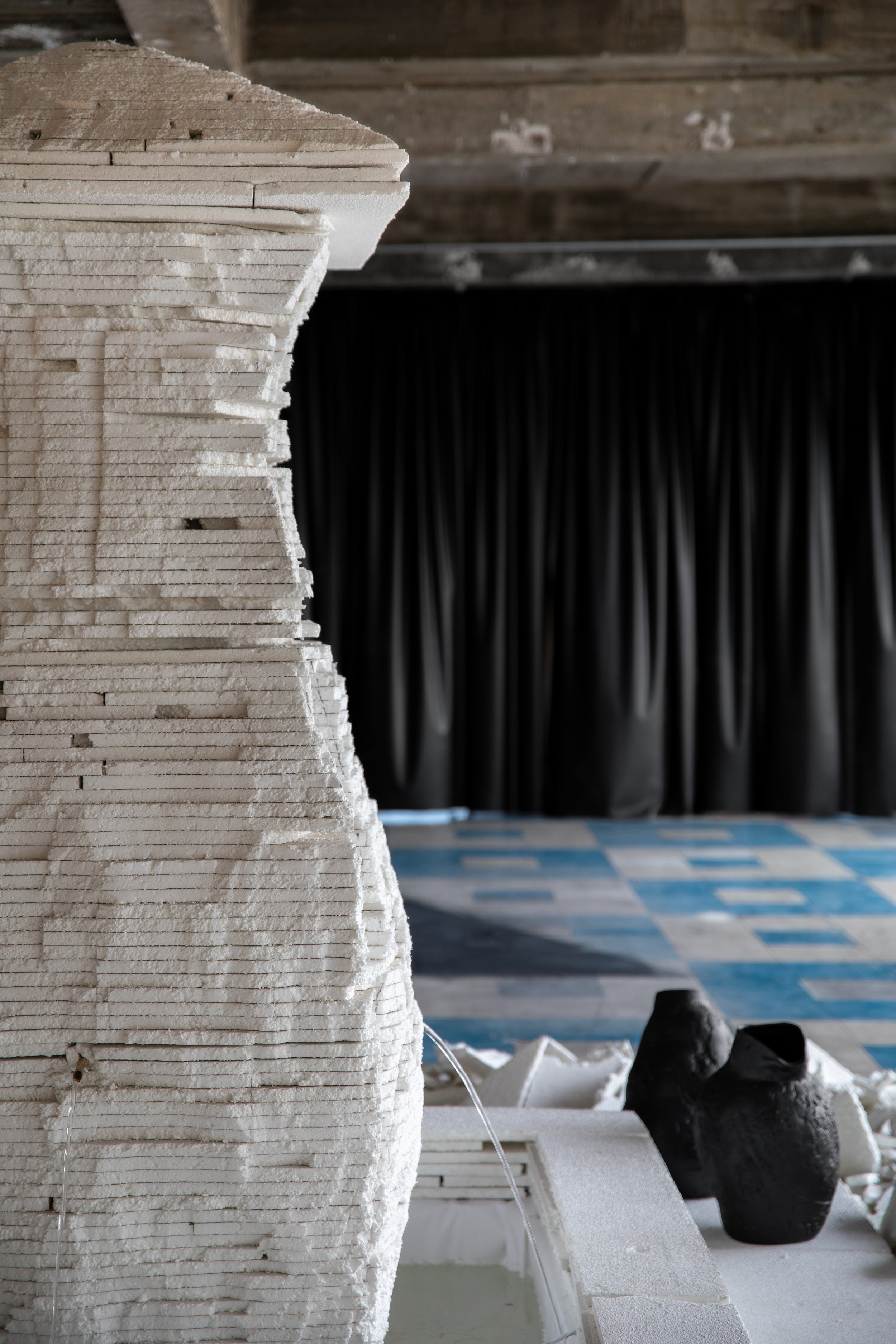
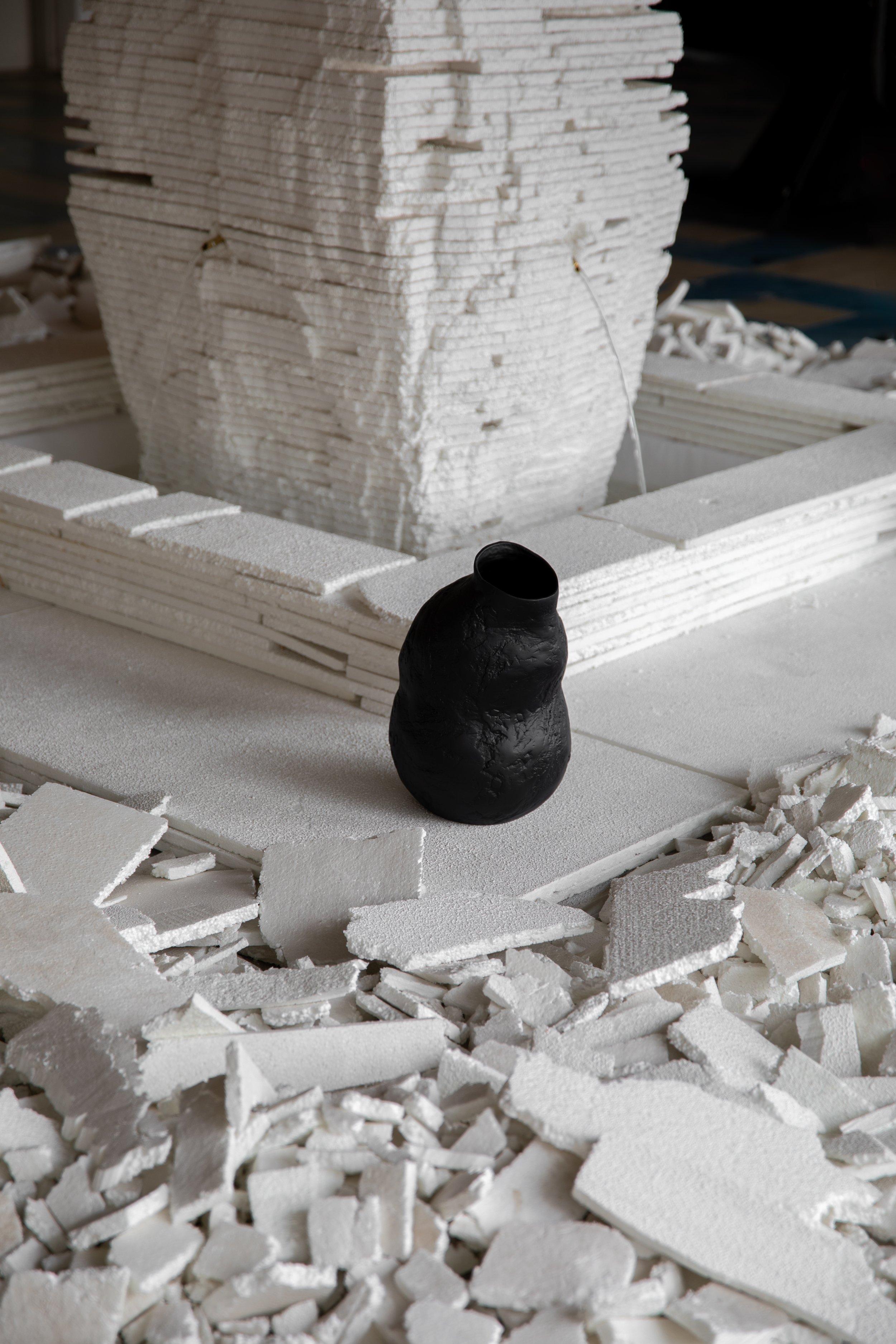
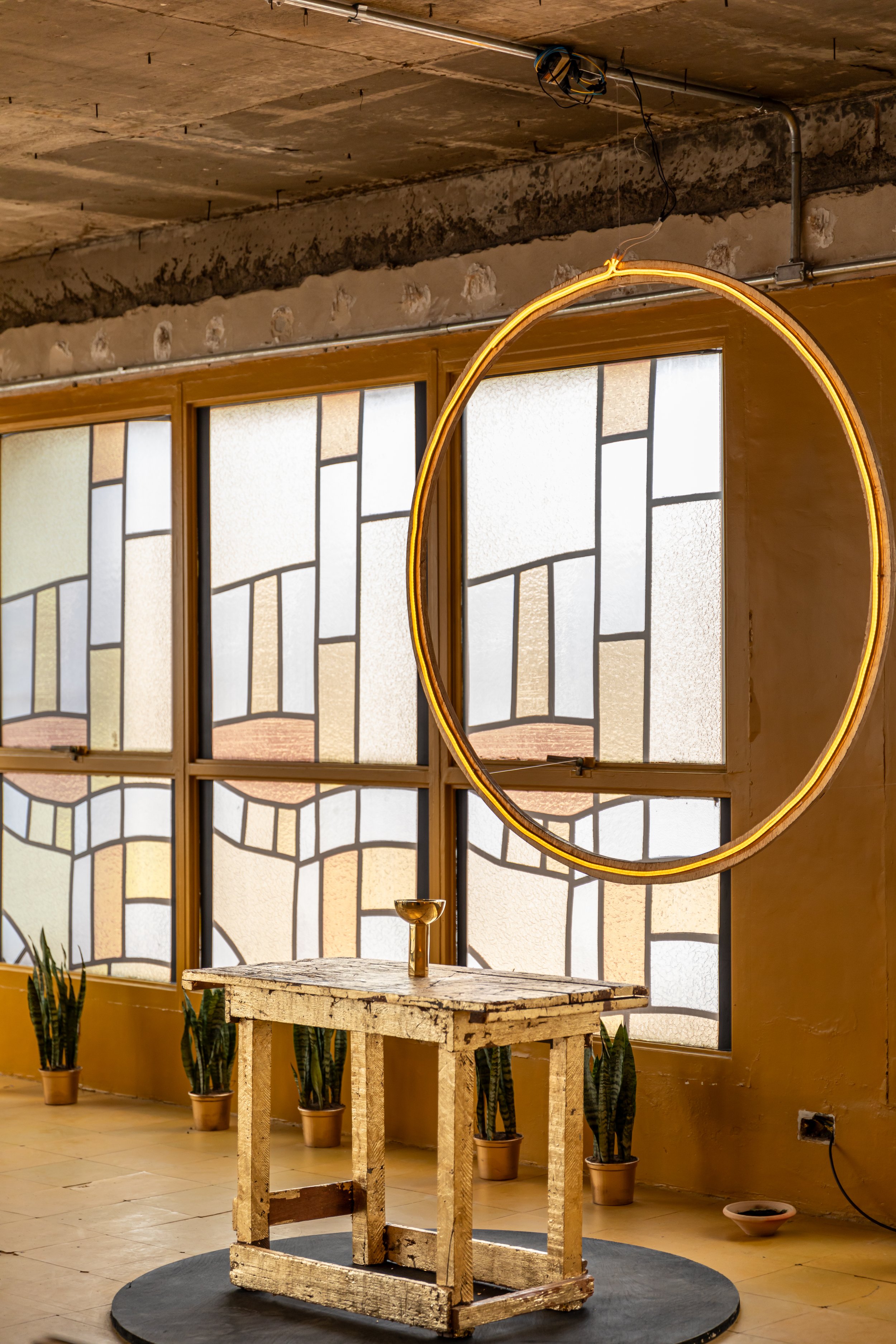
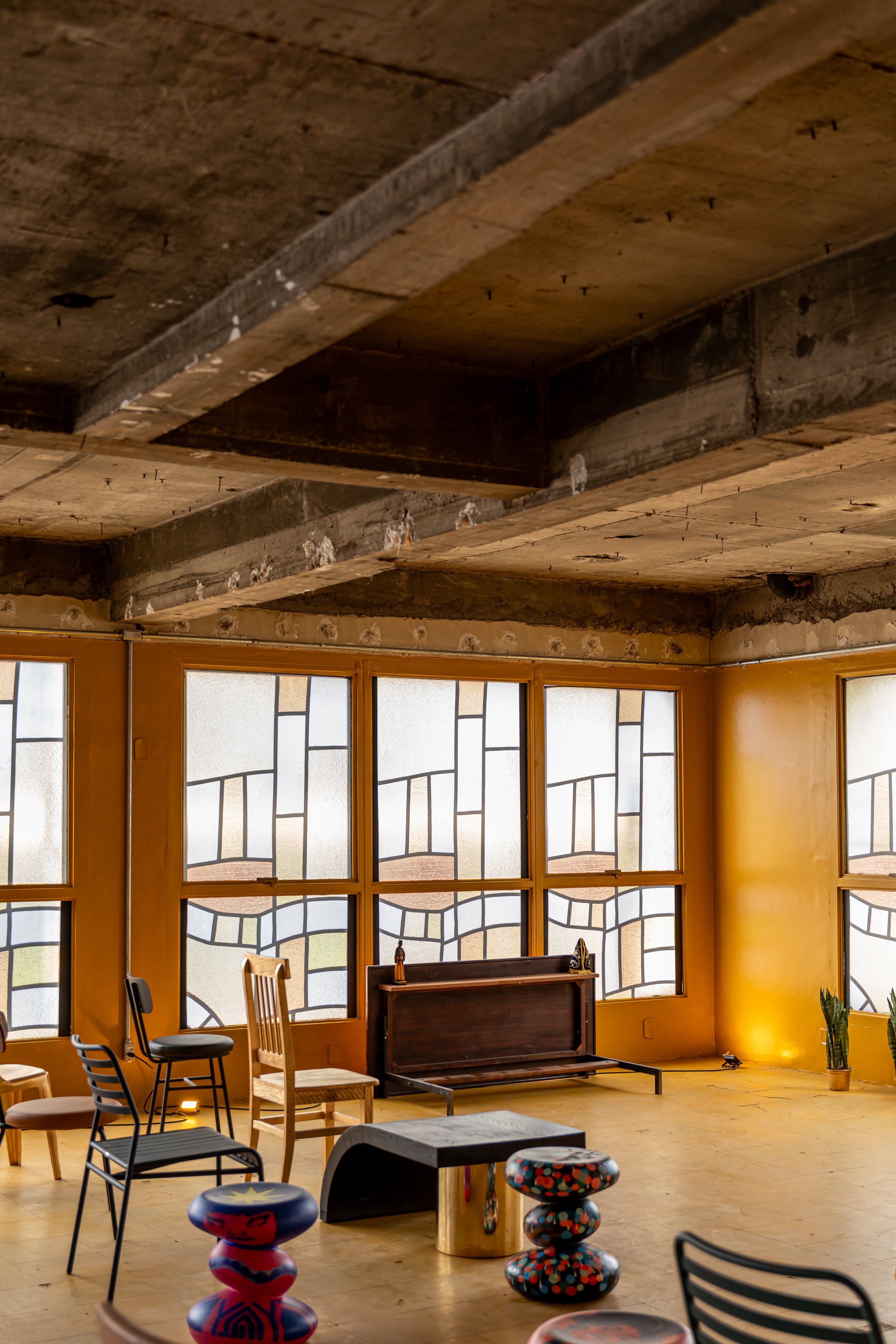
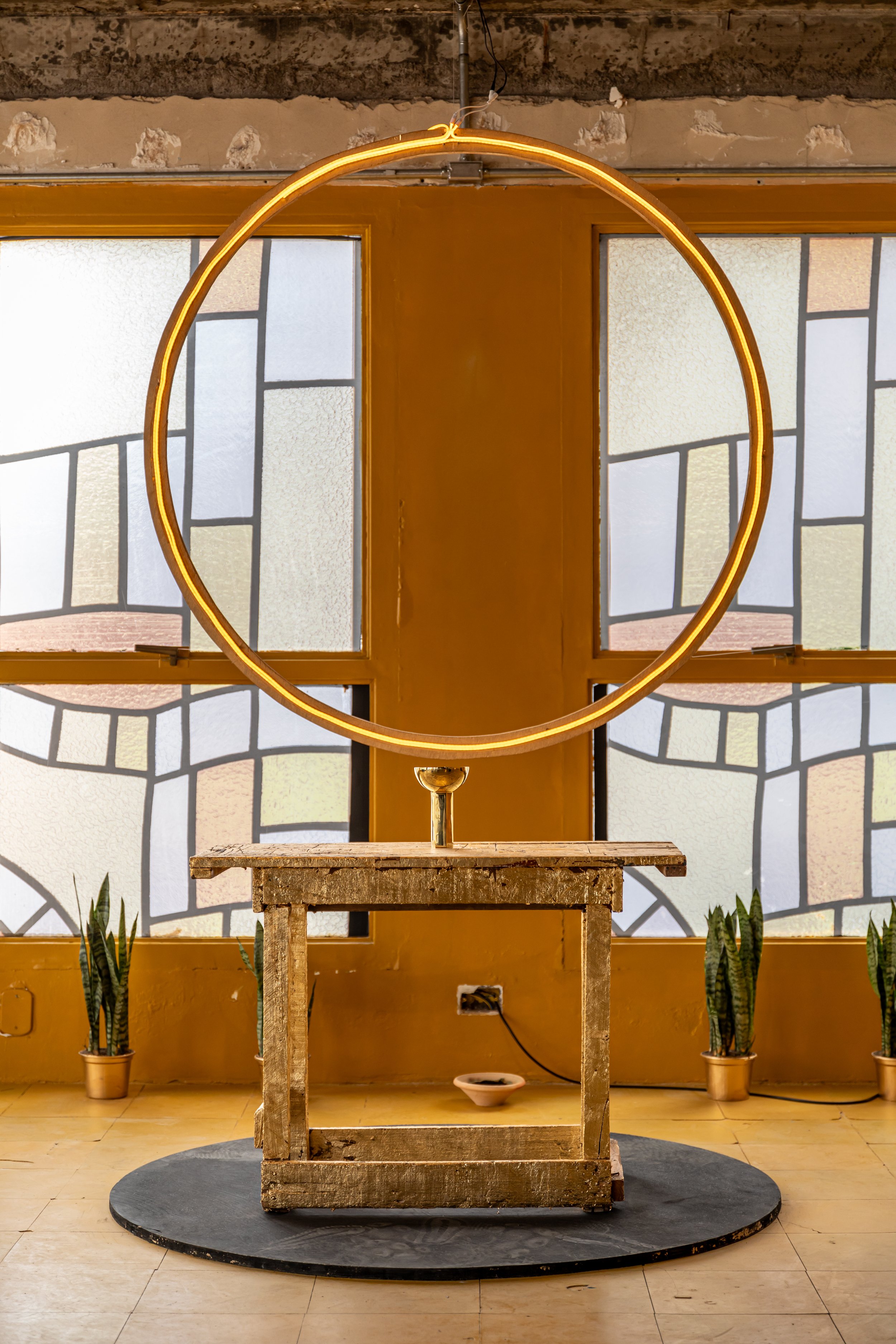
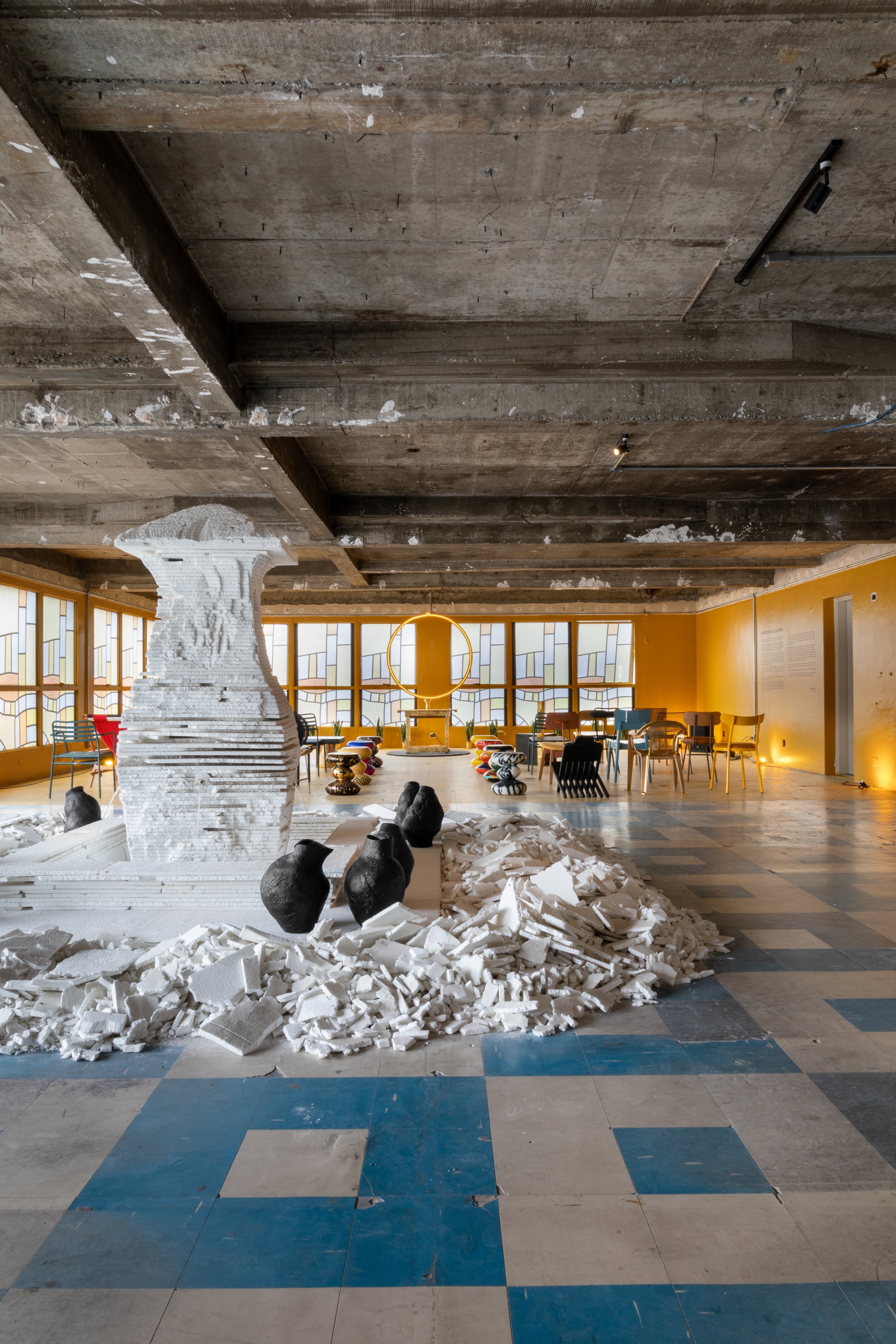
sculpt it🔪
make it shine! ✨
water!💦
PROCESS
The form of this installation was built through the stacking of 140 layers of demolition waste and its subsequent subtraction: an imaginary archaeology of the Mercy Fountain. In this process, crumbs are born, remnants of the sculpture, like the negative of history, mold and counter-mold left as residue of the narrative we strive to retell.
The object's archaeological process was carried out through research of existing historical records about the original fountain, which are limited to drawings and paintings from the time. Sculpting into the stacked rubble, our sculpture seeks to rediscover these forms layer by layer, cut manually by the pair. Its functioning seemed of utmost importance, generating a contemplative awe and adding another layer to recognize this archaeological object as a fountain indeed.
The Altar
Within the exhibition, we also created the Altar of Mercy, alluding to the old Church of Mercy that once existed there. We covered a carpenter's table found in the building with gold, revealing the scars and traces of time on the material.